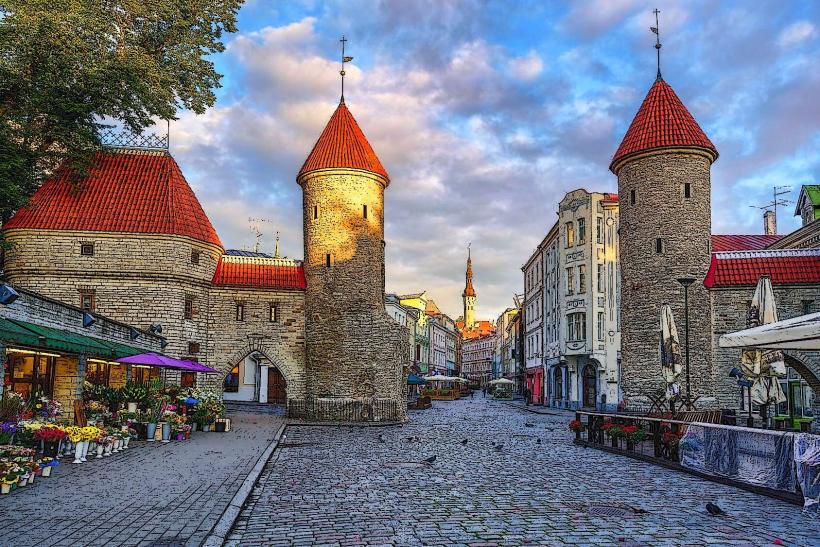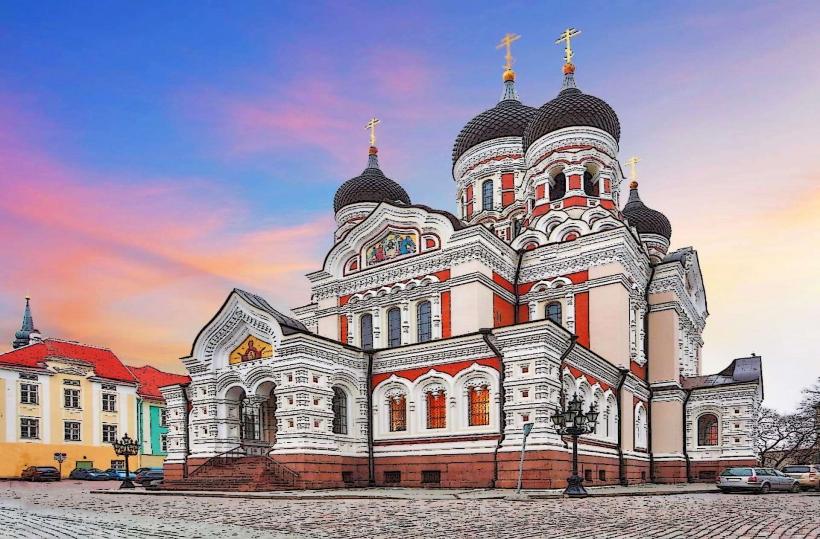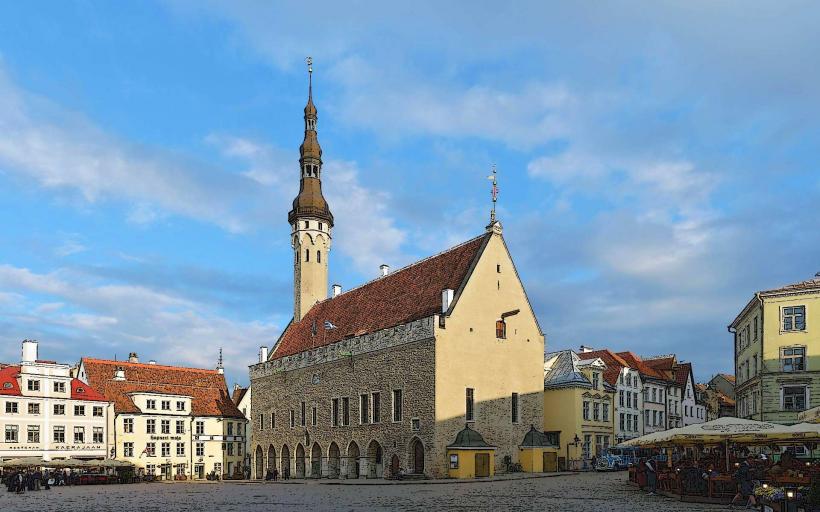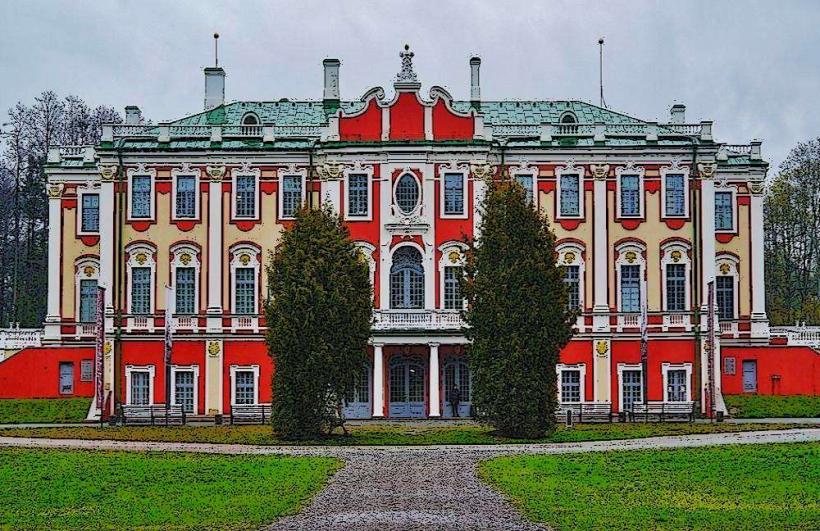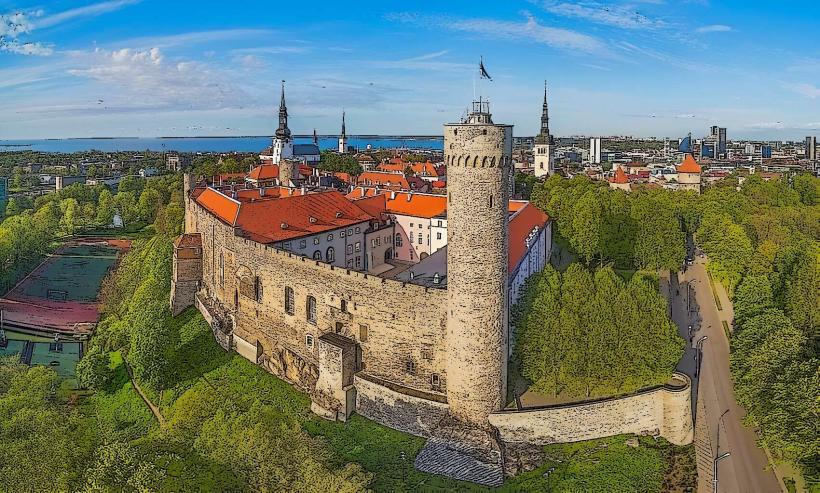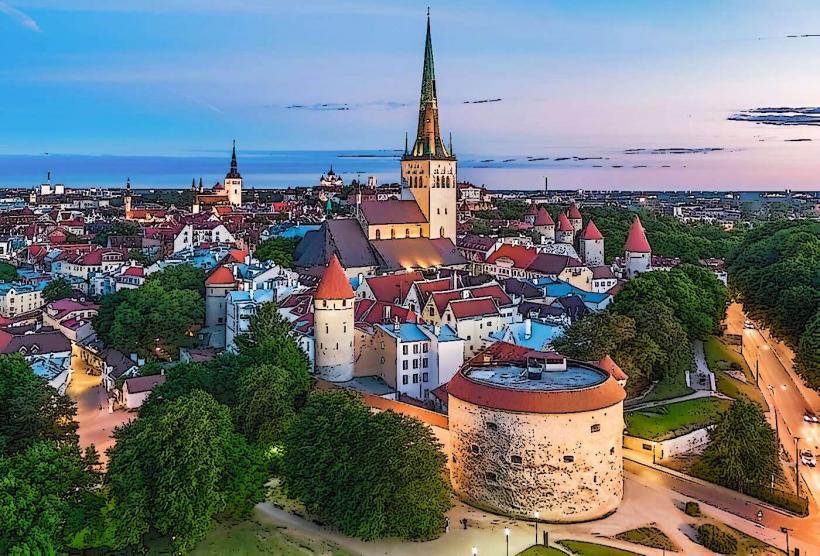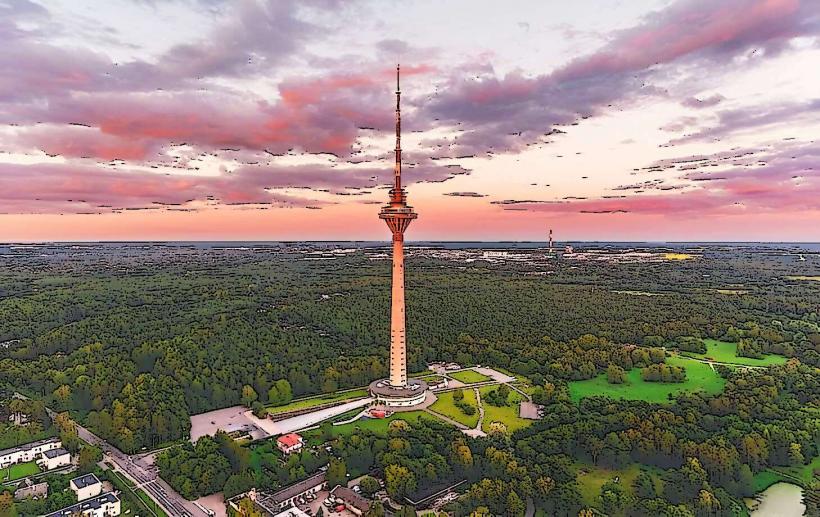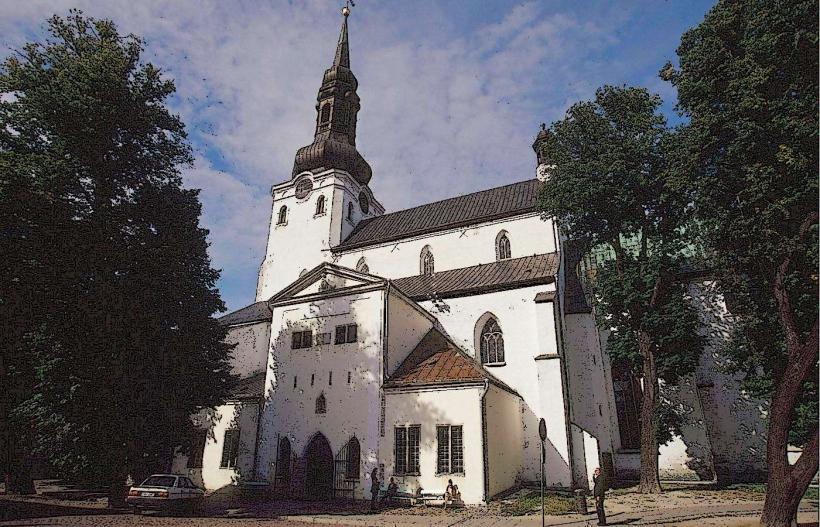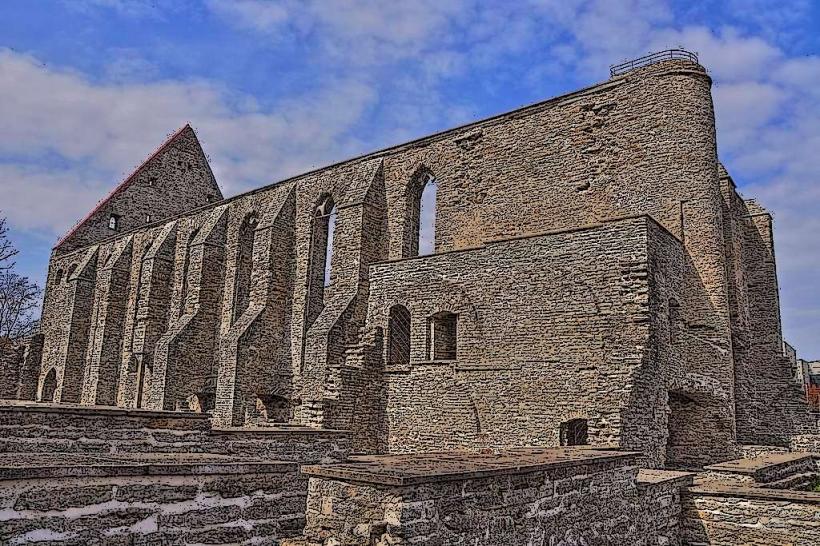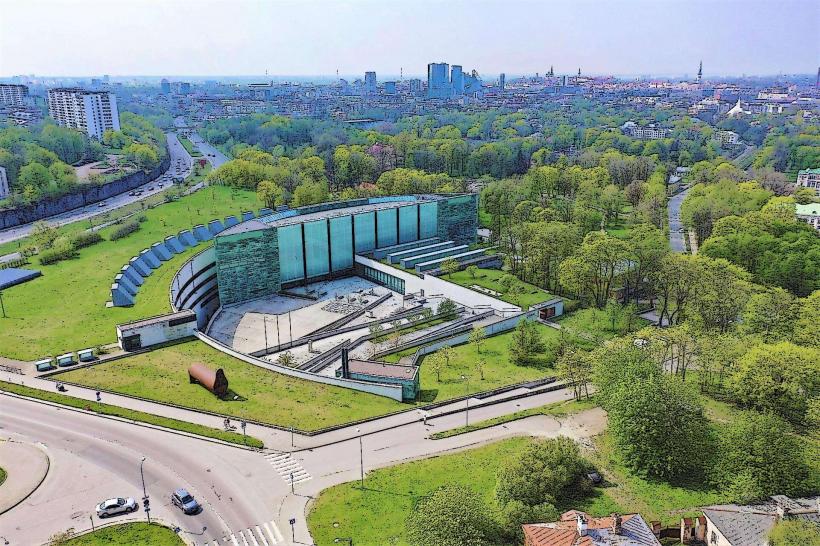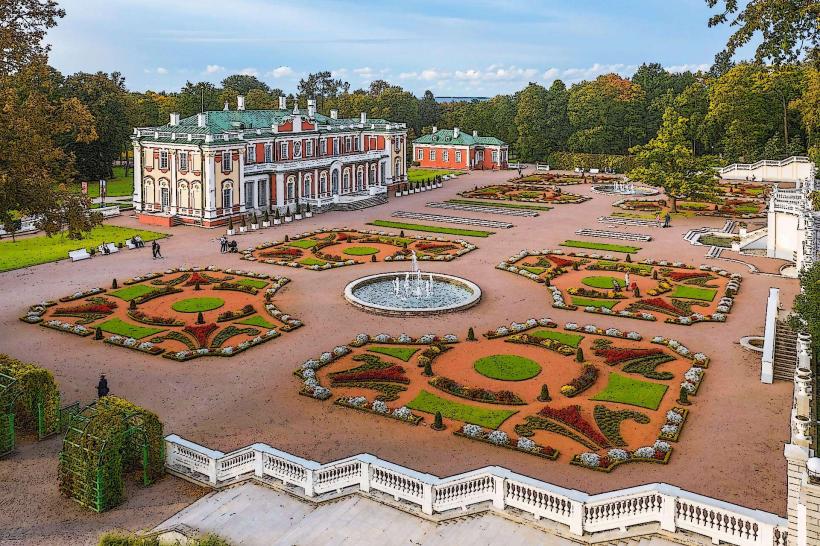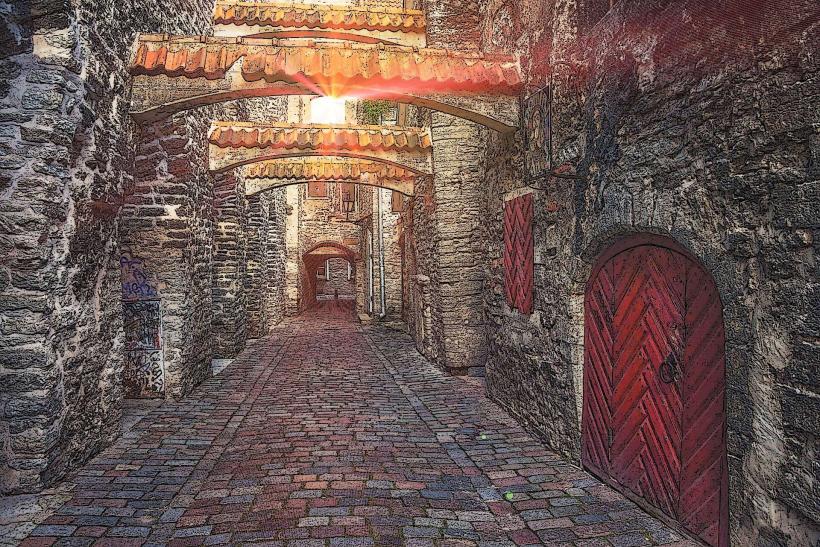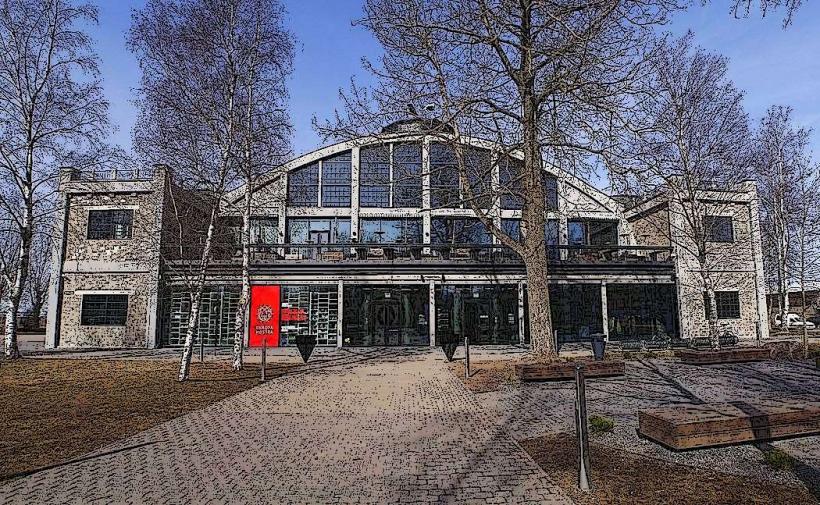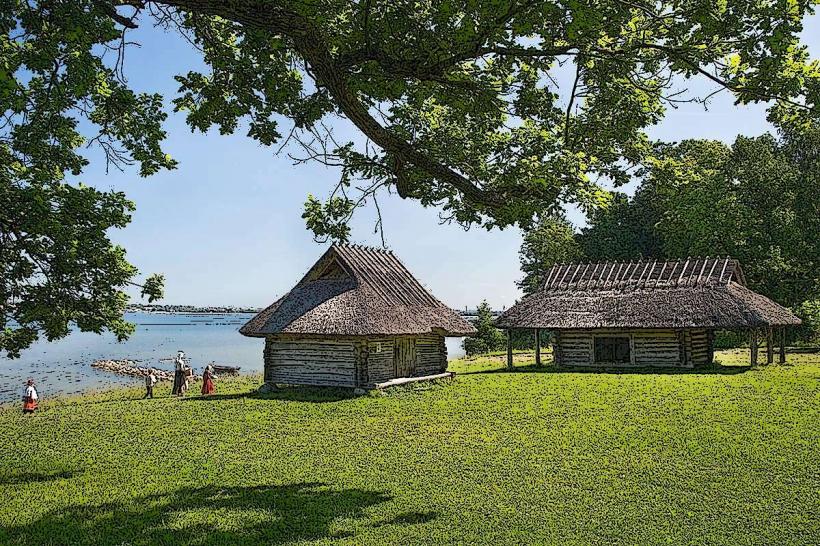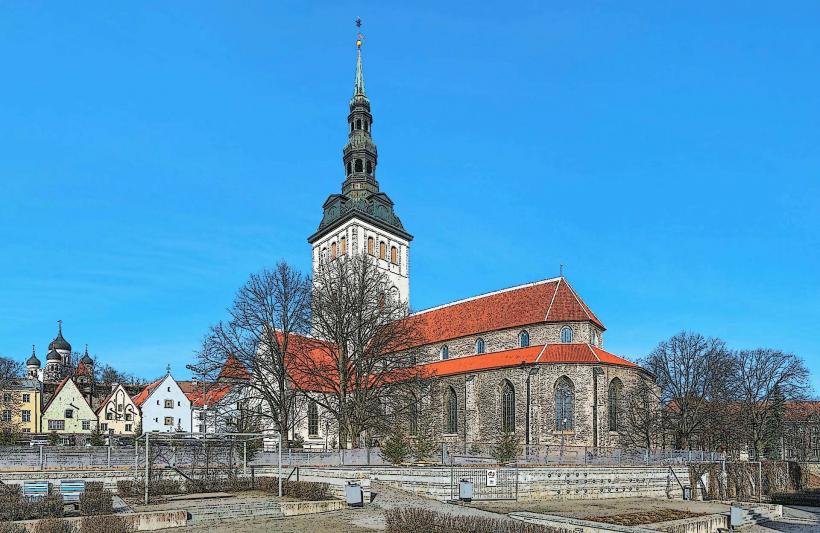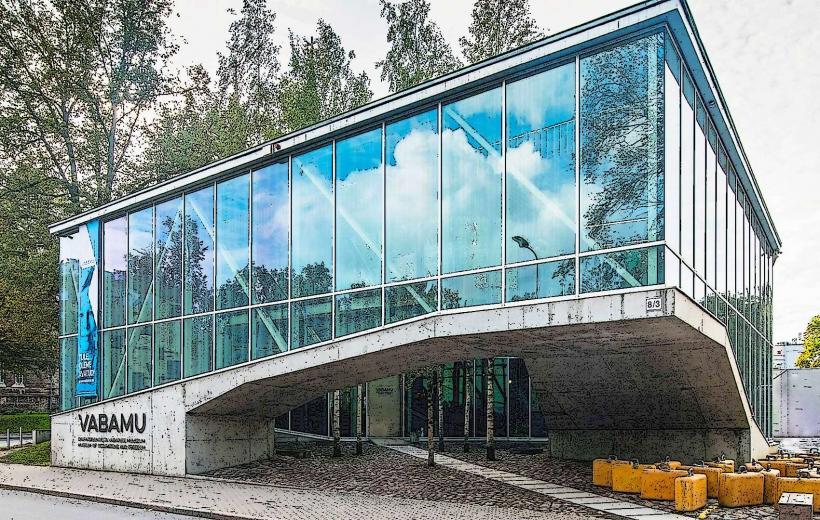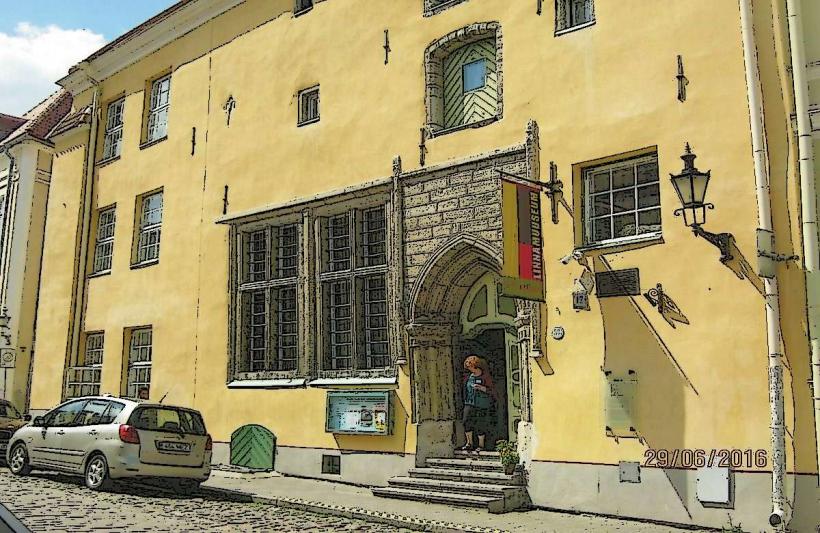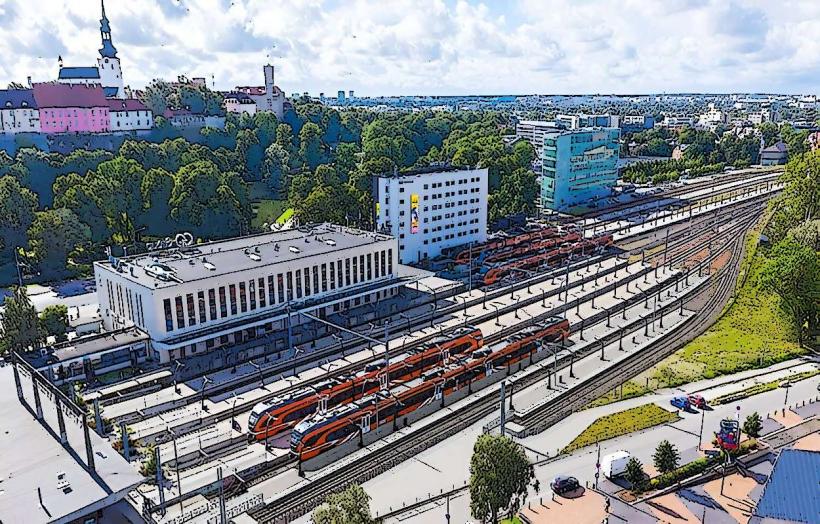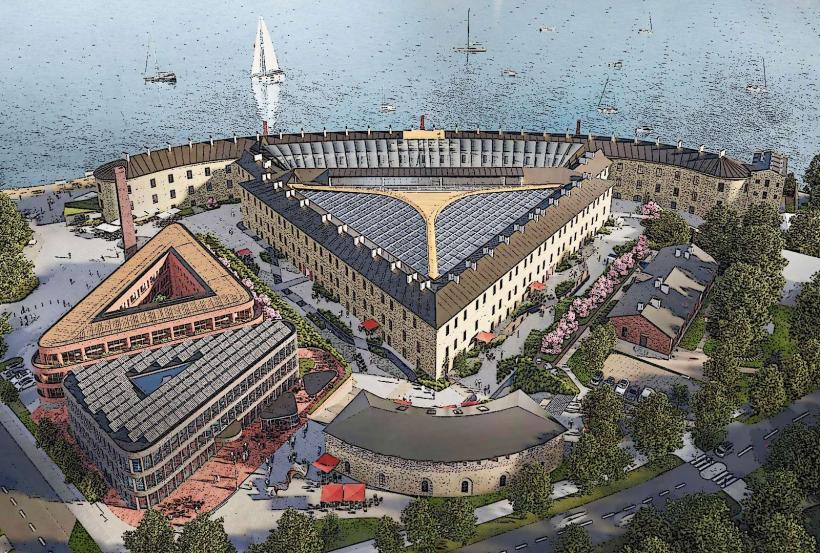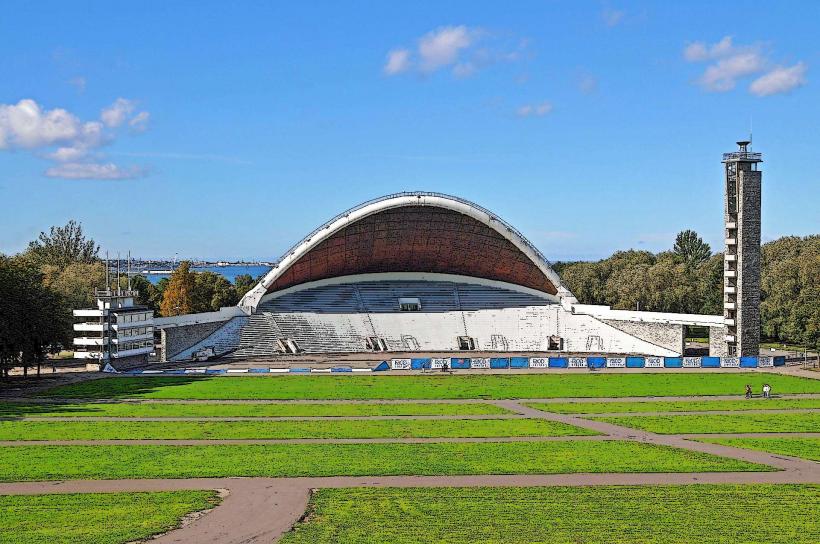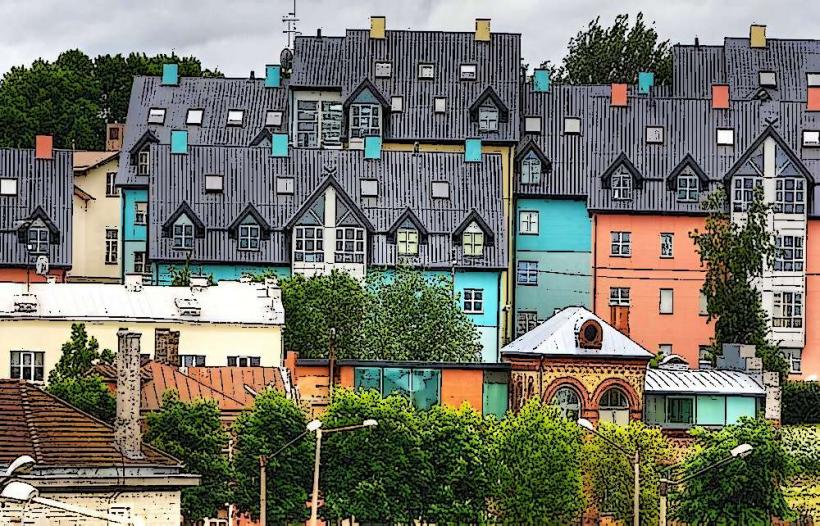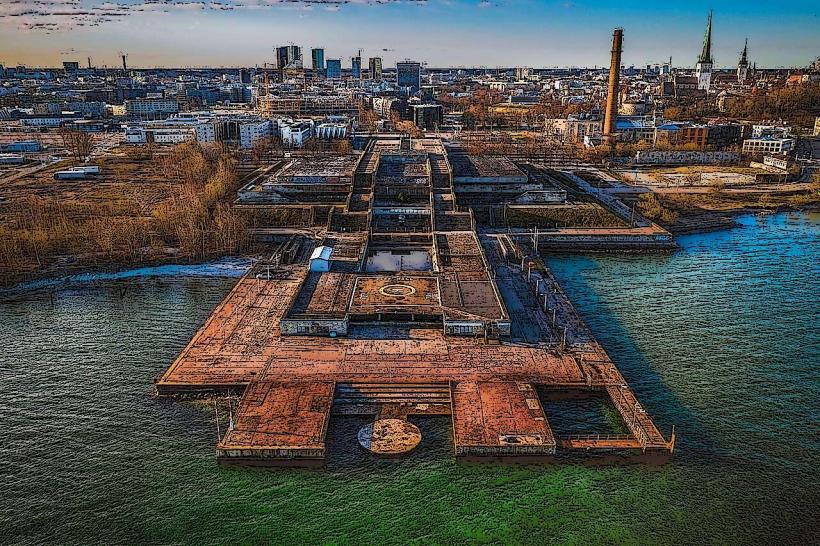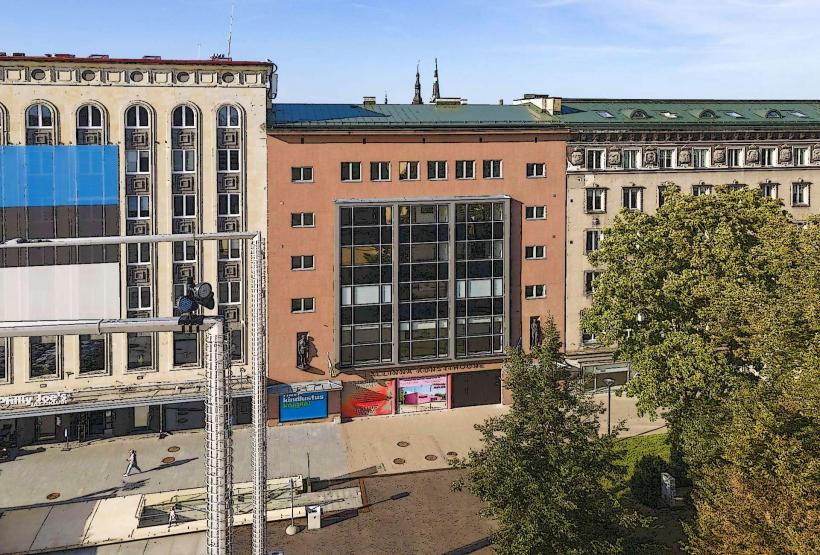Information
Landmark: St. Nicholas ChurchCity: Tallinn
Country: Estonia
Continent: Europe
St. Nicholas' Church (Niguliste Kirik) is one of Tallinn’s most significant and historical churches, located in the heart of the Old Town. It is known not only for its striking architecture but also for its rich history, beautiful artworks, and its role as a cultural and historical landmark in the city. Here's a detailed look at the church:
History and Architecture
Origins:
- St. Nicholas' Church was originally built in the 13th century, around 1275, by German merchants and townspeople in Tallinn. It is one of the oldest churches in the city and was initially intended as a Catholic parish church dedicated to St. Nicholas, the patron saint of sailors and merchants.
- The church has witnessed several changes over the centuries, reflecting both the political and religious transformations in Estonia, particularly during the medieval and Reformation periods.
Architecture:
- St. Nicholas' Church is a Gothic-style building, with distinctive features such as pointed arches, ribbed vaults, and a tall, narrow tower. The church’s design reflects the architectural style of the period, though over time it has undergone various modifications.
- The church has a simple exterior, with a whitewashed façade and a large central portal leading into the interior. The church's tower, which once served as a watchtower for the city, was a significant feature in the medieval skyline.
- Inside, the church is characterized by its vaulted ceilings, stone walls, and medieval charm. The interior is relatively modest, in keeping with its original function as a parish church.
Key Features and Artworks
The Altarpiece:
- One of the most important pieces of art in St. Nicholas' Church is its altarpiece, which was created in the late 15th century. This piece, known as the "St. Nicholas Altarpiece", is a stunning example of Gothic religious art.
- The altarpiece depicts scenes from the life of St. Nicholas and is a significant example of the work of early Estonian artists and woodcarvers.
The Paintings and Sculptures:
- The church is home to an impressive collection of medieval paintings, particularly frescoes that adorn the walls and ceilings. These works often depict biblical scenes and saints, providing insight into the religious culture of the time.
- The church also houses wooden sculptures and altar pieces from various periods, showcasing the skill of Estonian and Baltic artists.
The "Dance of Death" Painting:
- One of the most notable works of art in the church is a fresco depicting the "Dance of Death", a medieval motif that was common in European churches. This painting, located in the church's interior, vividly portrays a procession where death is represented as a skeletal figure leading people from all walks of life—knights, bishops, and peasants—towards their inevitable fate. This painting is a significant reminder of medieval views on mortality.
The Bell Tower:
- The church features a bell tower that has historically been used for both religious and civic purposes. The tower’s bells have been an essential part of Tallinn’s soundscape, marking religious observances and public events throughout the centuries.
The Church's Role Over Time
Medieval and Reformation Era:
- During the medieval period, St. Nicholas' Church was one of the most important churches in Tallinn. It was closely associated with the city’s merchant class, as they funded its construction and upkeep. The church played a vital role in religious life, hosting Mass, feasts, and community events.
- With the advent of the Reformation in the early 16th century, the church underwent changes, as many of the region's Catholic churches were converted to Lutheranism. St. Nicholas' Church became a Lutheran church after Estonia adopted Protestantism in the 16th century.
Soviet Period and Decline:
- In the 20th century, particularly during the Soviet era, St. Nicholas' Church suffered considerable damage and neglect. After World War II, the church was closed, and its fate became uncertain. During the Soviet period, the church was used for secular purposes, and much of its artwork and artifacts were removed or hidden.
Restoration and Museum Role:
- Following Estonia’s independence from the Soviet Union in 1991, St. Nicholas' Church was carefully restored to its former glory. In the 1990s, the church was repurposed as a museum and is now a part of the Tallinn City Museum.
- The church houses a museum of medieval art, showcasing many of its original artifacts, paintings, and sculptures, as well as providing exhibitions on the church's history and Tallinn's medieval past.
Cultural and Religious Significance
Religious Services:
- Despite its role as a museum, St. Nicholas' Church is still used for religious services today. Regular Lutheran services are held here, and the church remains a functioning place of worship for Tallinn’s Lutheran community.
Cultural Events and Concerts:
- The church is also a popular venue for concerts, particularly classical music performances. The church's acoustics and medieval atmosphere make it an excellent setting for musical events, including organ recitals and choral performances.
Commemoration of Tallinn's Heritage:
- St. Nicholas' Church is a key part of Tallinn’s historical and cultural identity. It is a must-visit for those interested in the city’s medieval past, offering a window into the religious practices, art, and culture of medieval Tallinn.
Visitor Experience
Location:
- St. Nicholas' Church is located in Tallinn’s Old Town, close to other major historical landmarks such as Tallinn Town Hall and Alexander Nevsky Cathedral. It is easy to access for tourists and offers a peaceful place to reflect on Tallinn’s long history.
Exhibits and Guided Tours:
- Visitors to the church can explore its impressive art collections and historical artifacts through guided tours or by wandering through the museum's exhibits at their own pace. Audio guides are available to provide additional context and historical details.
Conclusion
St. Nicholas' Church (Niguliste Kirik) is a key landmark in Tallinn, offering visitors a glimpse into the city's rich medieval history, religious heritage, and artistic traditions. Its Gothic architecture, historical artworks, and transformation into a museum make it one of Tallinn’s most unique and important cultural sites. Whether you are drawn to its medieval frescoes, historical significance, or its role as a cultural center, St. Nicholas' Church remains a must-visit for anyone interested in Tallinn’s vibrant past.

